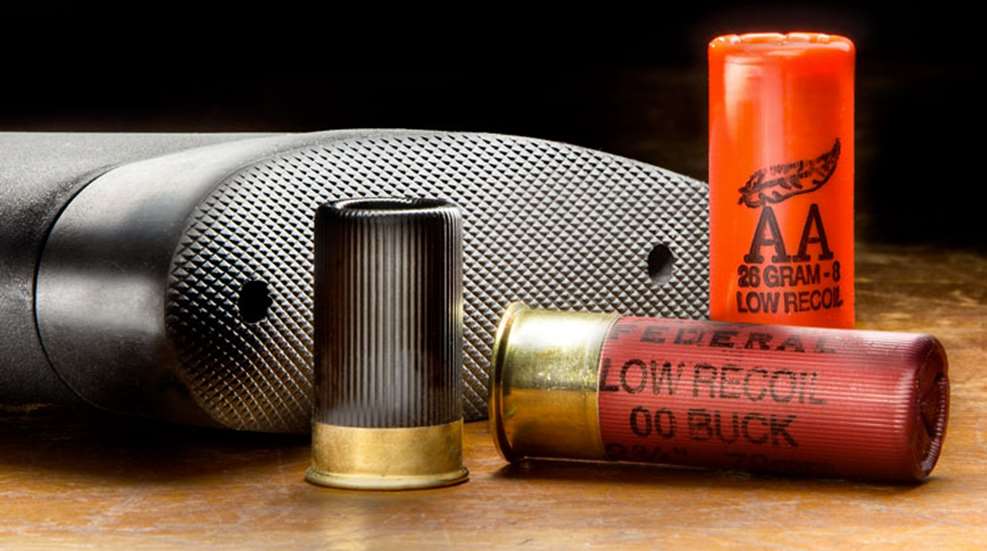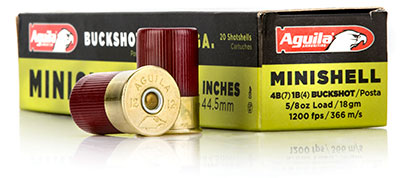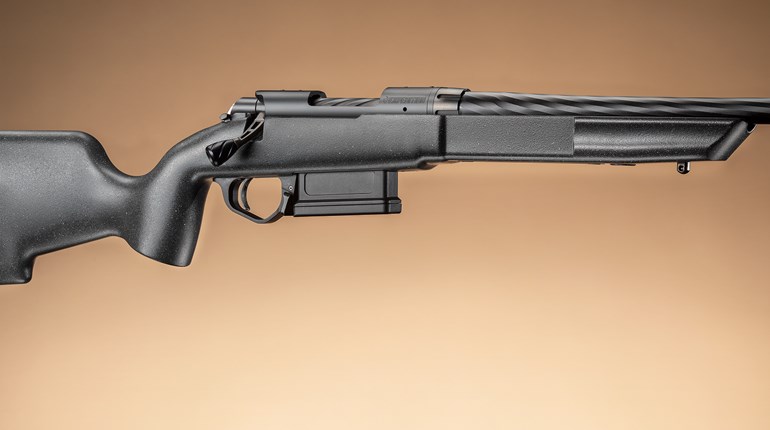
I previously thought reduced-recoil shotgun loads were just for cardboard-shouldered beginners. Fact is, however, there’s an abundance of reduced-recoil buckshot and slug loads on the market nowadays, not because ammunition companies are marketing toward the elderly, kids or hipsters, but rather because they offer real advantages for home defenders. Namely, low-recoil loads produce better accuracy, faster follow-up shots and yes—less pain for the shooter—while not compromising significant terminal performance. Hear me out.
There are many variables of the recoil equation, including action type, recoil pad, stock design, preconceived notions and others, but for simplicity’s sake let’s boil recoil down to three factors: Velocity (as a result of powder charge), payload weight (normally measured in ounces, but listed as pellet number for buckshot) and shotgun weight. For a benchmark, let’s establish that the average 12-gauge gun/load/recoil combination is a 7.5-pound pump-action, shooting a 9-pellet 00-buckshot load (1.107-ounce payload, plus wad and powder) at 1,200 fps; it produces approximately 25.9 ft.-lbs. recoil energy while producing 1,548 ft.-lbs. muzzle energy.
To put this in perspective, a standard-weight AR-15 firing 55-grain .223 Rem. ammo produces 3.7 ft.-lbs. recoil energy and 1,280 ft.-lbs. muzzle energy. In terms of recoil, the typical buckshot load is 3 ft.-lbs. shy of .300 Win. Mag. levels, and that’s a one big reason why AR-15s are so popular. Folks of all skill levels can shoot these rifles without getting punished—which translates to speed, accuracy and increased situational awareness while shooting.
For decades, buckshot offerings were only available in standard and magnum loadings because deer hunters wanted a round that would increase the shotgun’s power at longer ranges—and the best way to increase penetration is by increasing velocity. Loads like Federal’s 1,600 fps, nine-pellet 00-Buck load produce recoil energies in excess of 40 ft.-lbs. That’s fine for deer and turkey hunters, because they normally only shoot once. But while hunting ducks with 2-ounce, 3 ½-inch magnums, I noticed something. Upon shooting at the first bird in the flock, 40 ft.-lbs. of recoil energy would immediately rock me back, causing me lose my focus on the next bird, thereby preventing me from continuing my swing. Typically, I’d miss on subsequent shots. I had more than enough energy to kill the birds cleanly, but I discovered early that there’s such a thing as being over-shelled—especially at home-defense ranges where velocity drop-off never materializes.
A reduced-power offering such as Remington’s Managed Recoil load launches eight pellets at 1,200 fps to produce 1,376 ft.-lbs. muzzle energy. That’s only 172 ft.-lbs. less than the standard buckshot load, and still about 1,000 ft.-lbs. more than a common 9 mm pistol bullet. (Some shotshell companies choose to lessen recoil by pushing the same number of pellets slower, while others choose to reduce the total payload weight and push it at standard velocity; I tend to like the latter because the individual pellets retain their penetration power.) Meanwhile, the Managed Recoil load produces 20.4 ft.-lbs recoil energy (from a 7.5-pound shotgun) compared to the standard load’s 24.5. Four pounds is a big deal.
“I can feel every 50 fps of velocity in terms of recoil and controllability,” says 3-gun champion and shotgun specialist Jeff Cramblit. “And I can see it in my split times if the targets are close or I’m shooting the same target more than once.” He also says that recovery times will be dramatically higher for those with less training and practice.
Furthermore, I noticed a huge difference while practicing unconventional, emergency shooting techniques such as hip shooting. Hunting and years of patterning loads has also taught me something else: On average, high-velocity loads pattern worse than lower-velocity loads due to greater setback forces that can deform pellets and cause them to fly erratically. Granted, across the kitchen table—or with premium, copper-plated and buffered loads—it shouldn’t matter much, but I’m considering all angles here.
The question, of course, arises: Is the reduced-recoil load’s faster acquisition time worth the loss of downrange energy? I think so. But, remember that’s not all you might be trading. The real downside to reduced-recoil loads is that some of them—depending on the gun, your shooting style and other factors like your shotgun’s cleanliness—will not always function flawlessly in semi-autos. As with any new load, before betting your life on an untested round, make sure it works every time in your gun. If it doesn’t function 100 percent of the time, and you’d still prefer a load that hammers you less, you can always add weight to your shotgun. But, that’s another story for another time, with plusses and minuses all its own.

 Aguila MiniShell
Aguila MiniShell
If reduced recoil is your desire, Aguila’s MiniShell is the pipsqueak. This 1¾-inch, 5⁄8-ounce buckshot or slug load recoils 8.6 ft.-lbs. while producing 950 ft.-lbs. of muzzle energy. It will dramatically increase a pump gun’s capacity, but make sure it cycles without trouble in your model before using them for defense.
aguilaammo.com





































